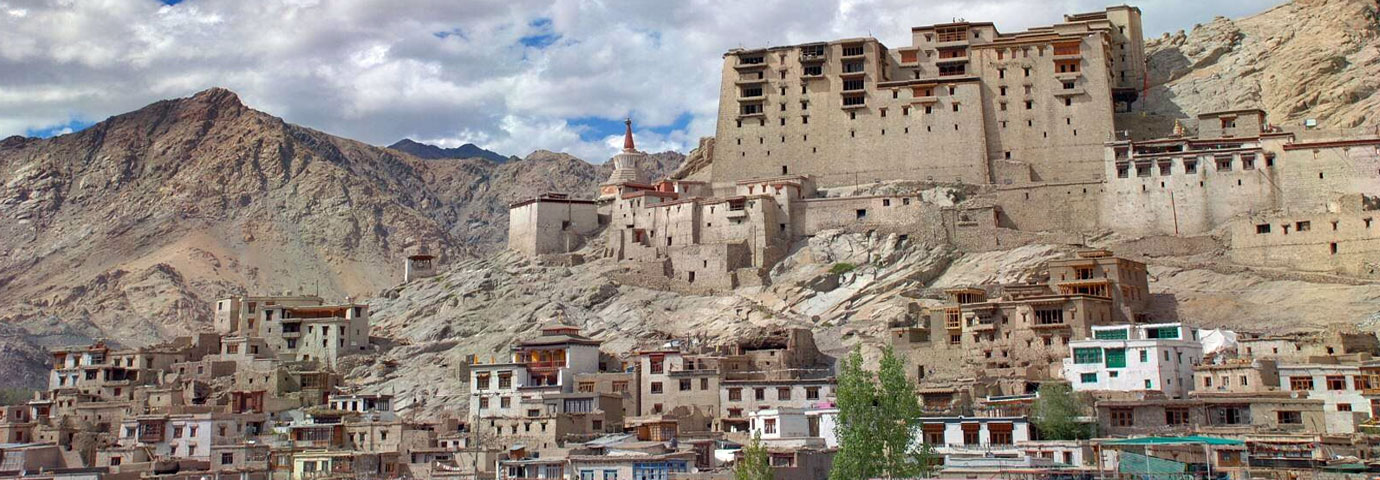Timings: 07:00 AM - 04:00 PM (every day)
Entry fees: INR 15 per person (Indian citizens), INR 100 (Foreigner nationals)
Located on the top of the deserted Tsemo Hill, Leh palace is also known as Lhachen Palkhar. The former palace of the royal family of Leh, it was erected in the 17th century. The place was one of the tallest structures with 9 storyes during its heydays. Today, it is one of the most popular attractions in Leh. From the top, the views of Stok Kangri, Ladakh mountain ranges and the town are simply breathtaking. Slightly ruined in condition, the palace is now managed by the Archaeological Survey of India’ (ASI).
History
Leh Palace was constructed by Tsewang Namgyal the founder of the Namgyal dynasty of Ladakh, way back in the year 1553. The construction of the palace was completed under the reign of Sengge Namgyal who was popularly known as the Lion King during the 17th century. While the upper floors of the palace were used as the residence of the royal family members, the lower floors comprised of stables and storerooms.
The royal family was forced to shift their base to the Stok Palace was Leh Palace was invaded by the Dongra forces in the mid of the 19th century. This palace had to face burnt of many wars and that suffered huge damages.
Architecture
Sharing its resemblance with the popular Potala Palace of Lhasa, the Leh Palace is a wonderful specimen of the medieval Tibetan style of architecture. The structure appears to be cold in summers and quite warm in the winters. The palace is built up of mud, wood, sand and stones, and is slightly smaller in size than Potala.
Though slightly in ruins, the small compartments, carved entrances, capacious rooms and expansive corridors haven’t lost their charm. The bigger corridors and rooms have now been turned into exhibition falls. Do not miss stunning murals on the walls of the palace, depicting the magnificence of its original times.
The Victory Tower just beside the Leh Palace is another popular landmark of Ladakh. This tower was built in the commemoration of Ladakhi soldiers who laid their lives in the war against the attacking Balti Kashmiri in the 16th century.
Attractions
Overlooking the Namgyal hill and the Leh town, the grand Leh Palace is an important center of the Buddhist religion as well as culture. The palace also comprises of a monastery that features a statue of Lord Buddha. In the exhibition halls of the palace, have a look at the old paintings and picture, some great artistic work along Tibetan thangka. Some of the paintings here are as old as 450 years and were created using colors that were made from powdered gems and stones. They look as fresh as new to the onlooker. In the Leh Palace, you can also spot a wonderful collection of royal jewelry, ceremonial dresses and crowns.


